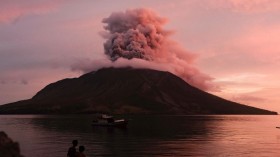In less-than-comforting news, scientists recently isolated a fourth giant virus in a sample of 30,000-year-old Siberian permafrost and say that this shows that potentially pathogenic viruses could be regenerated in the Arctic by melting. The team recently reported their findings in the journal PNAS.
The new virus is called Mollivirus sibericum. In the same permafrost sample, scientists previously found the following serious viruses: Mimivirus, Pandoraviridae, and Pithovirus, as a release noted.
Mollivirus is roughly spherical and has not seen before among the three virus families previously recorded. Finding four viruses within this one section of permafrost indicates that giant viruses aren't unusual and have great variety. It also shows that several types of virus can remain alive in permafrost for long periods. These types of viruses also have a large range of means of replication.
While Mollivirus was present in the permafrost section in a small way -- at only a few parts per million, this study finds that a small amount could still be infectious and could bring about the regeneration of possibly pathogenic viruses in the Arctic. This danger could also affect the human operators of the oil and other industries that seek to move into the Arctic as climate change alters the area, noted the release.
Currently, the scientists are examining even older Siberian soil samples, in order to learn more about these and other viruses, according to the release.
For more great nature science stories and general news, please visit our sister site, Headlines and Global News (HNGN).
© 2024 NatureWorldNews.com All rights reserved. Do not reproduce without permission.
![Extreme Heat Wave in Africa’s Sahel Region That Killed 100 People Linked to Climate Change [Study]](https://1471793142.rsc.cdn77.org/data/thumbs/full/70226/280/157/50/40/extreme-heat-wave-in-africa-s-sahel-region-that-killed-100-people-linked-to-climate-change-study.jpg)




